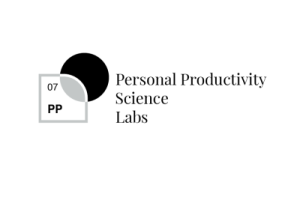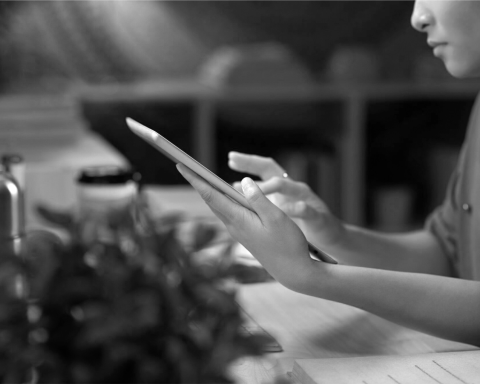Nobody can deny the impact of technology on productivity. It saves time, resources, and effort. But, the misuse and overuse of technology can harm your health and productivity.
APA defines digital addiction as the harmful effect of excessive use of technology. This abnormal use constitutes a daily habit that you cannot give up, and you will find psychological challenges if you try to control your usage.
Internet addiction, technology addiction, problematic internet use, computer addiction, pathological internet use, and internet use disorder are used interchangeably with digital addiction with, sometimes, slight differences.
But worry no more.
Through this article, you will learn to identify digital addiction, the symptoms and treatment of technology addiction, and how to utilize technology effectively.
Signs of digital addiction
If you experience digital addiction, you, and your loved ones, will probably notice some changes in your behavior.
Addiction is classified into two categories:
- Substance addiction such as drugs and alcohol addiction
- Behavioral addictions such as gambling, internet, sex, and shopping addiction
Many studies affirmed that the symptoms of both types of addiction are similar to a great extent. The internet, like drugs and alcohol, stimulates the hormone of happiness, dopamine, giving the user a sense of satisfaction.
The first step in treating digital addiction is identifying it and its symptoms. The major sign is not determined only by the number of hours spent using a smartphone, social media, or computer, but there are other serious symptoms such as:
- Inability to control time spent using digital technology;
- Suffering from withdrawal symptoms;
- Feeling down and out of mood when you try to cut down using the internet;
- Declining interest in work, studies, and social activities;
- Escaping from reality and considering the internet as a refuge; and
- Deliberate lying and concealing the truth to have extra time online.
All these symptoms shall negatively impact your productivity in multiple ways.
A study published in the Journal of Economic Behavior and Organization found that digital addiction harms work productivity. It causes sleep disturbances, especially if you use it late at night. The reason behind this is exposure to the screen’s light at night, which “suppresses the production of melatonin, the ‘sleep’ hormone which regulates our sleep cycle.”
Read more: The Impact of Sleep on Productivity and How to Get Better Sleep
Being always busy and distracted with your smartphone will prevent you from completing your tasks on time. Every moment you decide to concentrate on your studies or work, you unconsciously explore social media or text a friend.
Strategies for overcoming digital addiction
Technology is used in everyday life and almost everything: work, communication, entertainment, education, and shopping. A major challenge behind giving up technology is it’s indispensability.
The best approach to overcoming addiction is gradually reducing digital device usage. Here are some tips to control using digital technology:
Setting boundaries and limits on device usage
Give yourself a minute to pause and consider whether you are wasting your time. Set clear boundaries between your work, personal life, and digital media usage.
You can start by forbidding yourself from using smartphones at certain times of the day. Do not start your day by checking messages and texts; do not go to bed while scrolling. Your day’s beginning and end must not include using digital devices.
Also, your mealtime must be dedicated to food and company only. Let your body digest and taste food without distraction.
Additionally, some applications may help you to cut down the number of hours you spend using the internet. They provide you with reminders and block you from using social media applications at specific times.
Examples of these apps include:
- Freedom
- BetBlocker
- Forest App
- YourHour
- Siempo
Practicing mindfulness and meditation
Release stress and anxiety through mindfulness and meditation. Mindfulness is about paying attention and being aware of your surroundings and what is happening around you right now. It engages your emotions, feelings, body sensations, and self-talk.
Read more: Reaching a Higher Sense of Self Through Mindfulness
Meditation is the most well-known kind of mindfulness. It is defined as an act of self-regulation that focuses on training attention and awareness to bring mental processes under greater voluntary control, thereby fostering general mental well-being and development and/or specific capacities such as calmness, clarity, and concentration.
Finding alternative activities to replace screen time
Distract yourself and try enjoying something other than social media and the internet. Think about carrying a book while traveling. Hang out with friends and leave your smartphone at home. Devote time to your mental peace through meditation and relaxation. Take naps or attend some events.
In a nutshell, do whatever you love and enjoy, and regularly decrease screen time.
Seeking professional help if necessary
If your addiction is severe, you need to consult a therapist. Various techniques include motivational interviewing, group therapy, cognitive behavioral therapy, or psychosocial therapy.
Most compulsive internet use is a consequence of underlying psychological risk. For example, a person may suffer from anxiety or depression and then resort to the virtual world to escape from negative feelings.
Tips for boosting online productivity
Although technology has become indispensable, we need to use it effectively and efficiently and be aware of any negative effects of its misuse. Some ways to boost productivity include:
Creating a daily schedule and routine
Track your daily activities. How much time do you spend scrolling through social media? How long do you walk or do physical activities? Then, modify your daily routine.
Prioritizing tasks and setting goals
While using digital technology, ask yourself the following:
- Your purpose: Checking news, texting friends, playing games, looking for vacancies, or something else.
- Devoted time: How much time should you spend in achieving your purpose? Should you text your friend all day or is 10 minutes enough?
- Urgency and priority: Is there anything else that is prior to using tech? Do I miss a deadline? Do I need to call my family?
Leveraging technology to get ahead
Have you ever considered using digital technology to learn something new, get to know new people, or even explore your future career? Here are some things you can do:
Networking
Social media is not limited to Instagram and TikTok. There are also professional networking websites and applications. LinkedIn, for example, is a great source to connect with people in your industry and learn from their career paths.
Learning new things
The internet is rich with online resources that help you learn whatever you want. If you want to learn a new language, download Duolingo or Busuu. Prepare yourself for promotion and acquire new technical skills through Udacity and edX. Also, consider pursuing a MicroMaster’s degree online from Harvard or MIT.
Advancing your career
Digital technology gives you access to information that can advance your career. For example, being exposed to new vacancies daily on LinkedIn or Glassdoor will help you realize the skills you need.
In conclusion
Digital addiction impacts mental health, productivity, behavior, and physical health. It distracts you from your studies or work and may harm your social relationships.
On the other hand, one cannot simply give up using technology. Therefore, you need to effectively utilize digital technology to boost your productivity instead of inhibiting it because mindful use of technology is your best tool.
If you would like to see more resources on digital addiction, visit the Personal Productivity Science Labs. The lab uses the research of the Institute for Life Management Science to produce courses, certifications, podcasts, videos, and other tools. Check out the Personal Productivity Science Labs today.
Photo by Eren Li on Pexels



